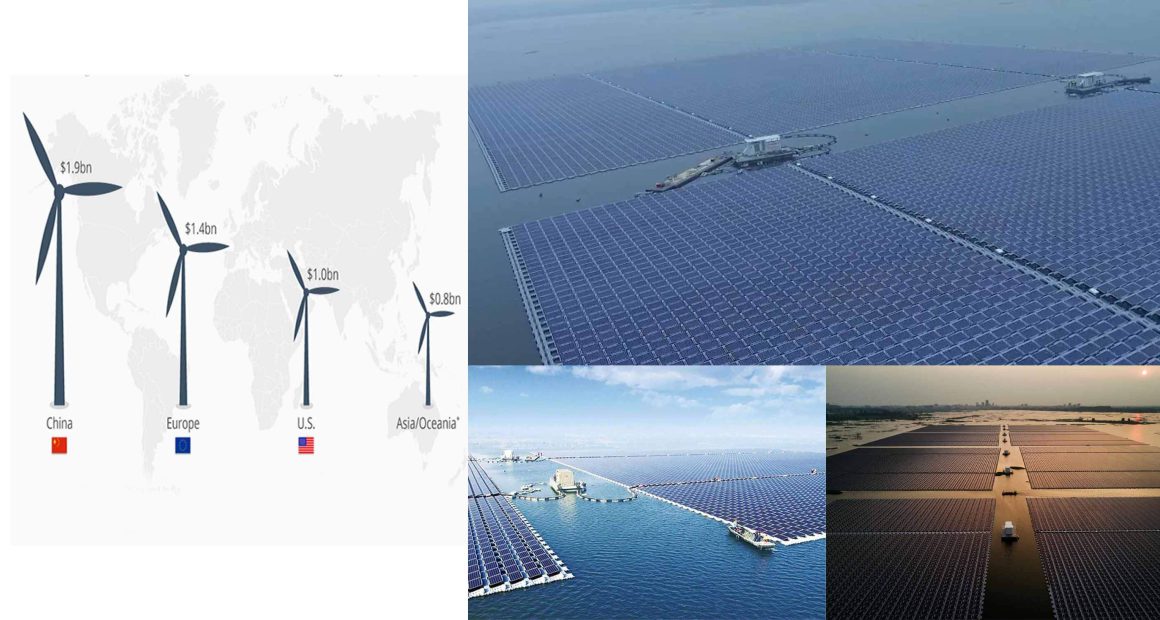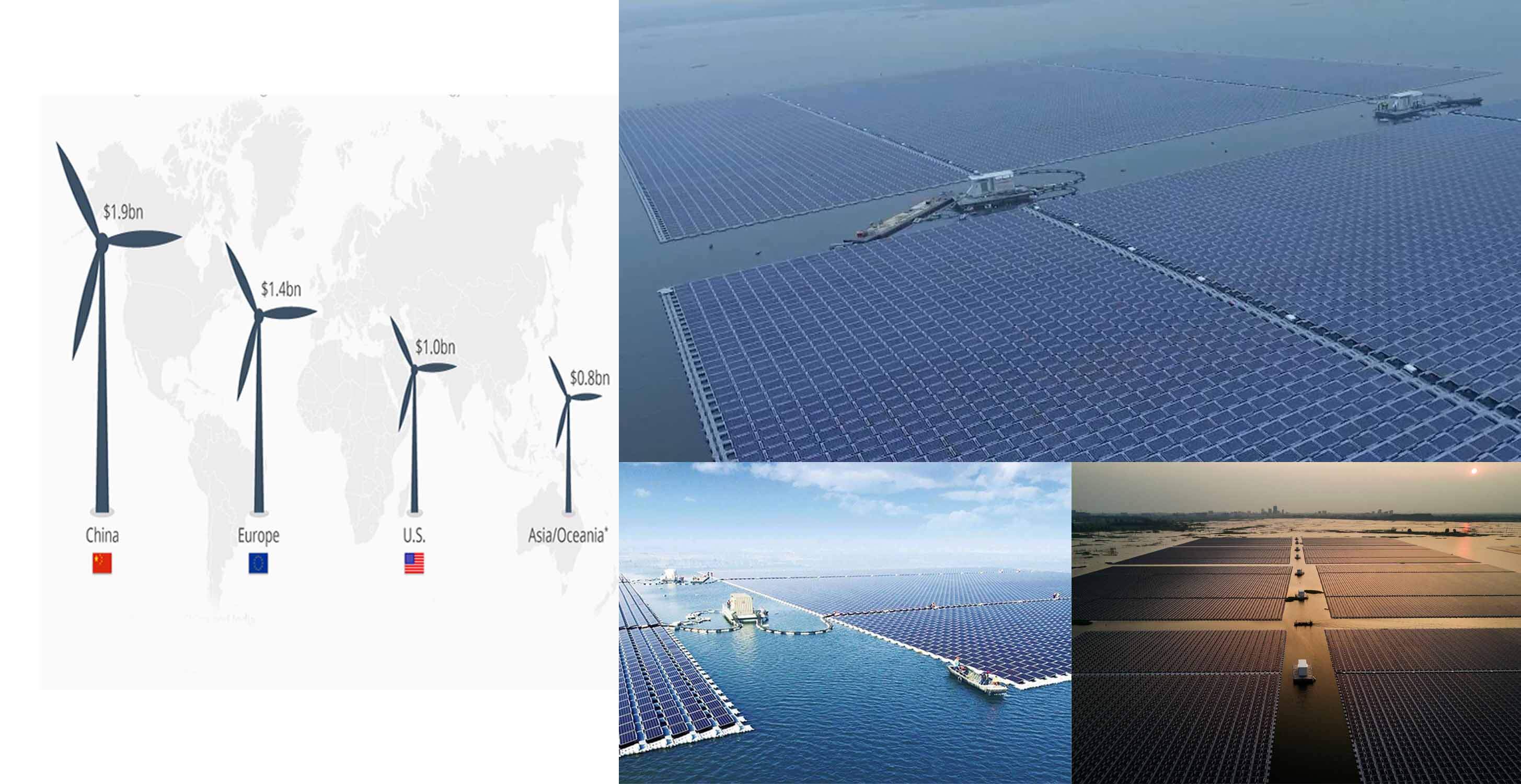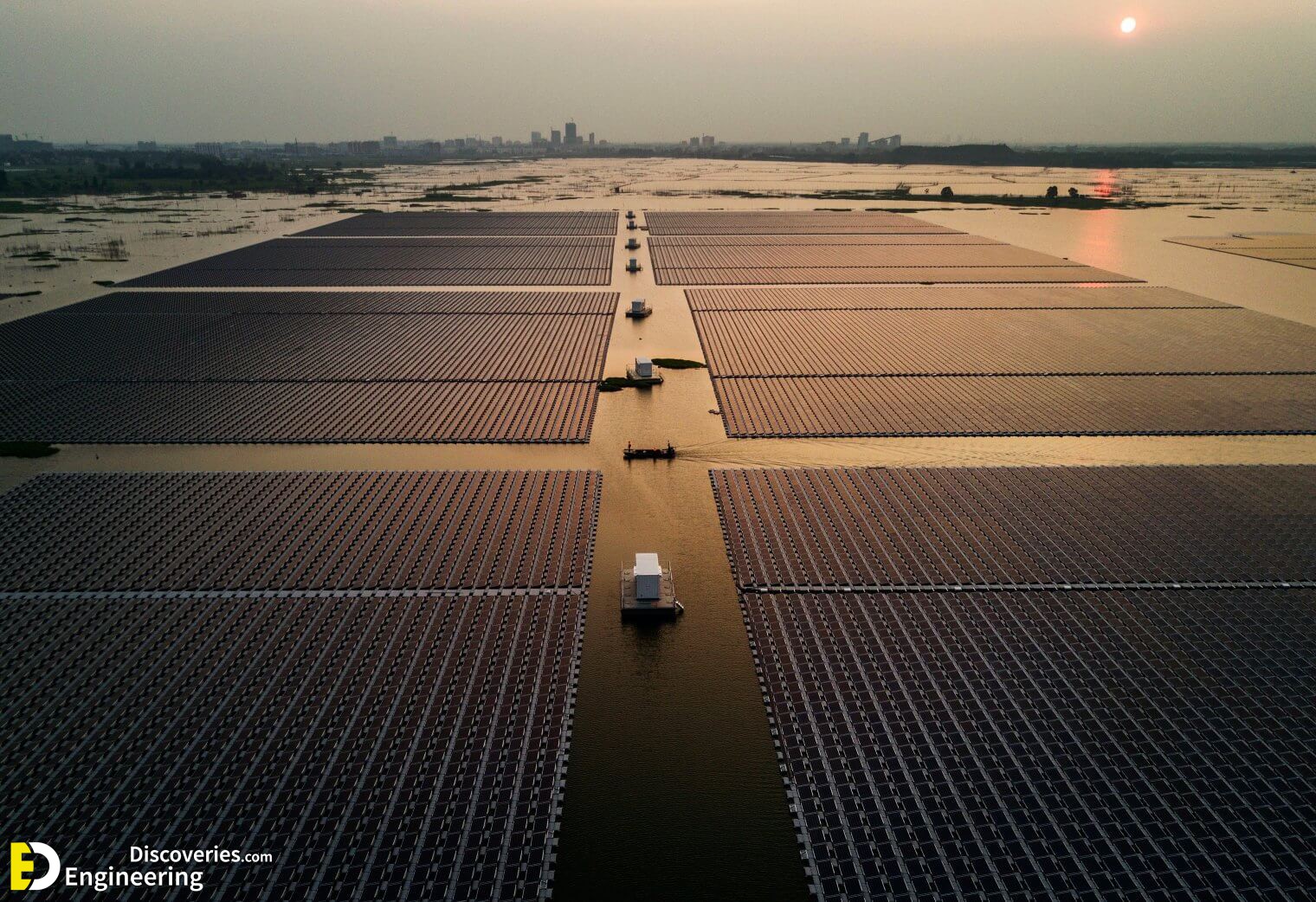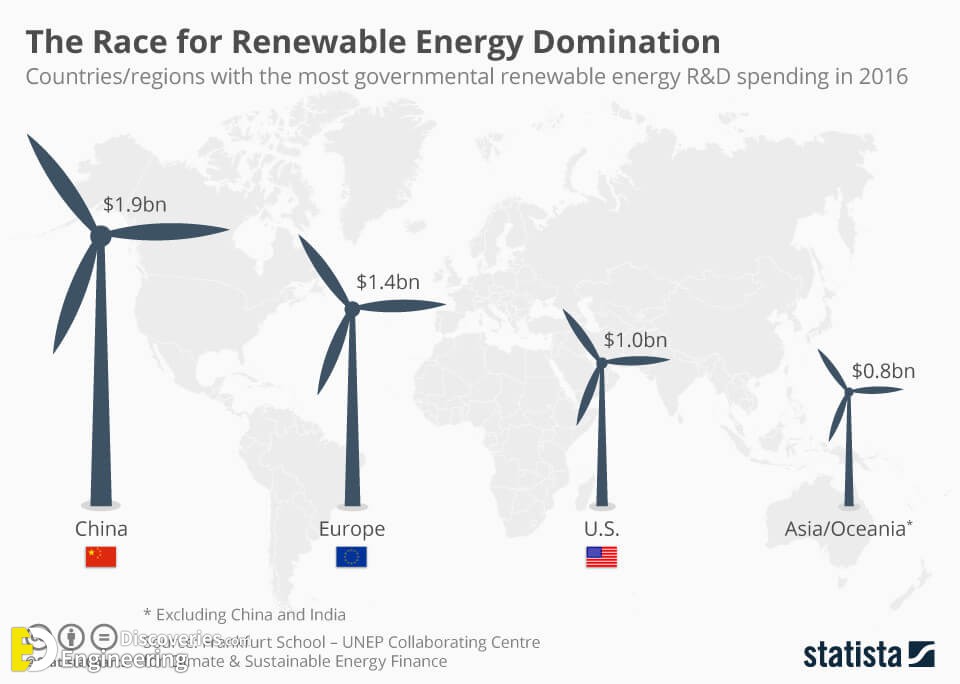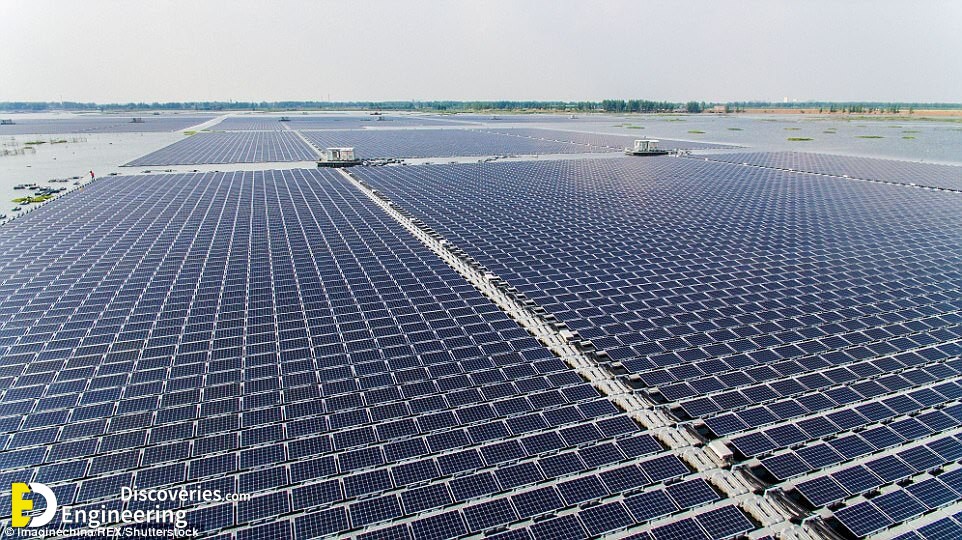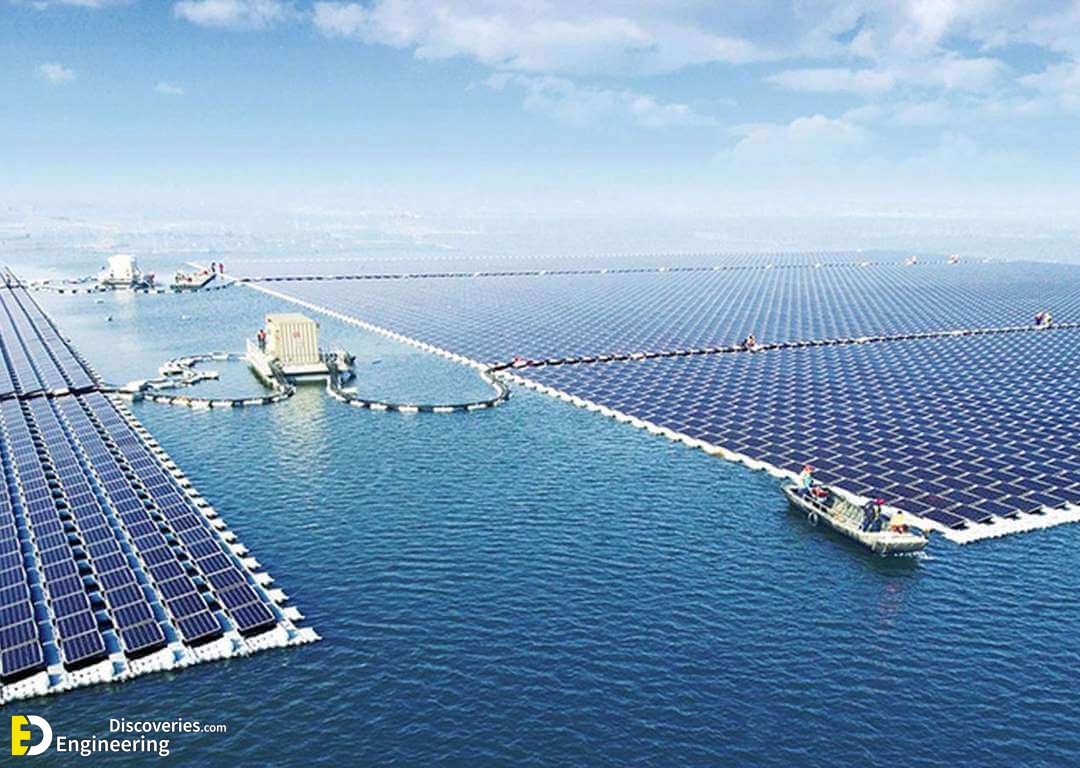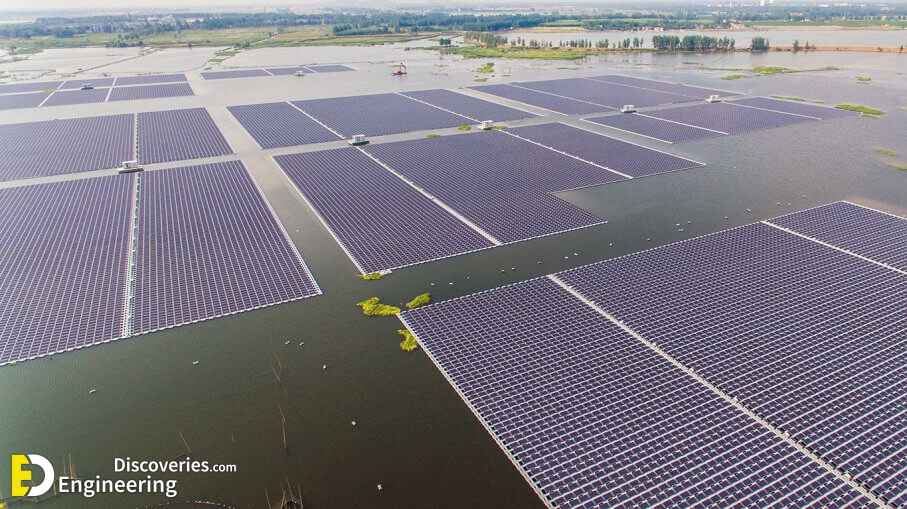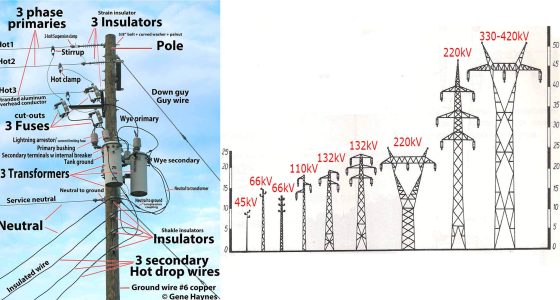The Sungrow Huainan Solar Farm was once the world’s largest floating solar array. Located 5 km southwest of Nihe Town, Huainan city in China’s Anhui province, the array floats on an artificial lake, created on the site of a former coal mine, and has a capacity of 40 MW. The array consists of 166,000 panels and was built by Sungrow Power Supply. It produces enough energy to power 15,000 homes, or twice as much as the previous holder of the largest-floating-solar-plant title, which was built by Xinyi Solar nearby in 2016. The benefits of floating solar arrays include: lower temperatures boosting power efficiency; the lack of dust meaning it can stay clean longer; using the water to clean the panels; and reducing water evaporation.
So why build solar plants on top of lakes and reservoirs? Fiona Harvey at The Guardian explains that building on bodies of water, especially man made lakes that are not ecologically sensitive, helps protect agricultural land and terrestrial ecosystems from being developed for energy use. The water also cools the electronics in the solar panels, helping them to work more efficiently, reports Alistair Boyle for The Telegraph. For similar reasons Britain built a 23,000-panel floating solar farm on the Queen Elizabeth II reservoir near Heathrow airport in 2016 to help power the Thames Water treatment plant.
The Sungrow solar farm is just one tiny piece in China’s push towards renewable energy. According to Irina Slav at Business Insider, the country recently announced it would invest $361 billion in renewable power by 2020, and by 2022 could produce 320 gigawatts of wind and solar power and 340 gigawatts of hydropower. Zheng reports that currently renewables are responsible for 11 percent of China’s energy and may reach 20 percent by 2030.
While the floating solar plant is the largest in the world, it pales in comparison to some of China’s non-floating solar projects. The Longyangxia Dam Solar Park on the Tibetan plateau hosts 4 million solar panels that produce 850 megawatts of energy. Even that will soon be eclipsed by a project in the Ningxia Autonomous Region, which will have 6 million solar panels and produce 2 gigawatts of power.
